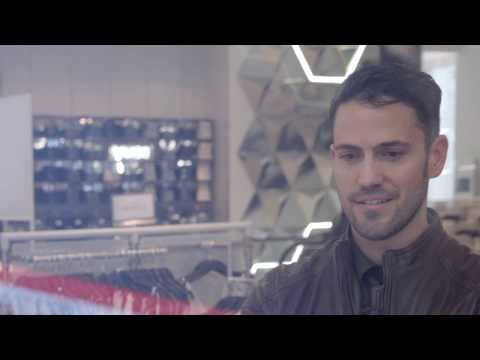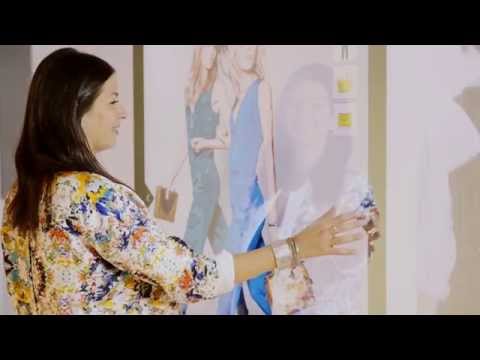Holly Dawson looks at how fashion retailers can make the most of digital technology to enhance the in-store shopping experience.
It’s obvious that the way in which we shop is ever-changing and brands are having to keep up.
In a world full of ecommerce, how can fashion retailers increase their in-store experience to maximise sales? Technology is the answer.
In a recent study, 75% of consumers stated that good technology in store would contribute to higher priced and more frequent purchases!
What are the ways that fashion retailers can integrate technology on the high street?
Reflect the Online Shopping Experience
Today’s shoppers want physical channels that reflect digital ones; they want a seamless, personalised and a hassle-free journey to purchase.
However, the technology options that stores currently offer often underwhelm consumers, with 40% of shoppers claiming that they have a poor experience very often or every time with technologies such as self-checkouts and electronic payment in store.


So, what are some options that these stores can explore to appeal to these consumers?
Augmented Reality
Let’s start with the obvious, AR! It’s all over the place recently and rightly so! Augmented reality has a lot of benefits for all industries, including fashion.
Zara
One high street brand that is using AR to their advantage is Zara, who launched an augmented reality app which works in 120 of their flagship stores globally. Zara introduced this technology in April with hopes to lure millennials into their high street stores.
This high street experience works by allowing consumers who have downloaded the Zara AR app to hold up their phones to selected store windows.
Models will come to life on their screens, wearing selected items from Zara’s latest range, which they can click through and buy on the same app.
This integrates both the online and in-store shopping experience as well as encouraging consumers to visit their bricks-and-mortar stores.


H&M
H&M have taken their in-store technologies a step further, earlier this year, revealing a voice-activated mirror in their Times Square, New York flagship store.
This mirror has features that allow consumers that enter the shop to take selfies and receive fashion recommendations.
Microsoft, Ombori and Visual Art teamed up to create this device. The mirror ‘sleeps’ until facial detection technology turns it on.
H&M turned to artificial intelligence (AI) to create surprise, the satisfaction of experience then making a conversion.
In short, this has been added to H&M stores in order to induce more sales in the high street.
In addition to this, through the use of this technology, they are able to understand their customer base to a high extent.
For example, so far in Stockholm, Sweden, H&M have learned that women make up a large percentage of their customer base and that high fashion items such as floral skirts have sold at better than they predicted.
This not only allows H&M to understand their target audience better but also allows them to stock their locations based on what style of clothes and accessories are popular via the mirror.
Rebecca Minkoff
Another brand using smart mirror technology is Rebecca Minkoff, who partnered with eBay in 2014 to install connected mirrors in store.
However, as opposed to being on the shop floor like H&M, these mirrors replace regular mirrors found in fitting rooms.
This mirror allows consumers to browse additional sizes and products that will complement what the customer is trying on.
30% of their customers reportedly requested additional items thanks to the smart mirrors suggestions. This is a perfect example of how technology aids cross-sell and upsell opportunities.
Beacon Technologies
In addition to the in-store techniques, technology can tempt customers, who would otherwise walk past, into a store.
This is done through the use of beacons which communicates with the consumer’s phone. The purpose of beacons is to send Bluetooth signals to mobile phones within a specific area close by to the store to identify individual customers and send them personalised offers.
This is done by integrating customer data from all social media channels and views their open and shared activity in the web store and in store.
Retailers such as Urban Outfitters, Target, Macy’s and CVS use beacons on their high street stores. These beacons are expected to reach a 133% compound annual growth rate between 2016 and 2021!
![]()
![]()
Technology Aiding Staff Members
As well as technology in the fashion industry boosting the customer shopping experience, it can also pay a huge help to staff members of the store.
Take John Lewis as an example, who have given the staff members in 20 of their stores an iPhone with a partner app downloaded on to this.
Staff members will then be able to use the app to aid customers with queries about products and stock availability without having to go to the stock room or till to check.


This makes the customer journey more time effective and streamlined, similarly to an online journey.
So, how exactly does the addition of technology in stores boost sales? It’s simple, today’s shoppers are looking for an in-store shopping experience with all of the benefits of ecommerce. So keep the in-store shopping experience streamlined and personal.
Speak to an expert
Learn how to convert your online audience into revenue with our experts.










![Valentine’s Day Ecommerce Tips and Trends [2024 Strategy]](https://www.salecycle.com/wp-content/uploads/2019/01/valentines-ecommerce-1.png)




![How SaleCycle helped Vodafone increase their online sales by an additional 2,000 additional sales per month [Extended Version]](https://www.salecycle.com/wp-content/uploads/2023/08/vodafone-banner.webp)




